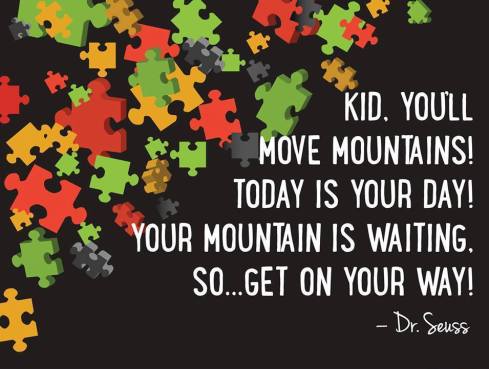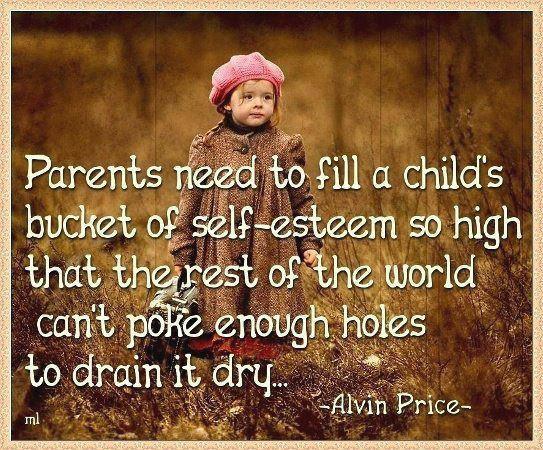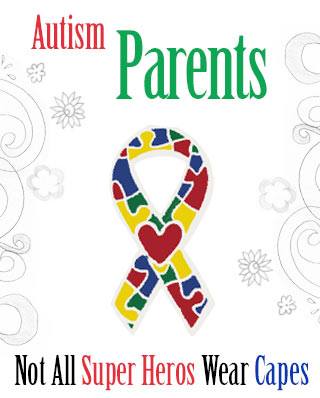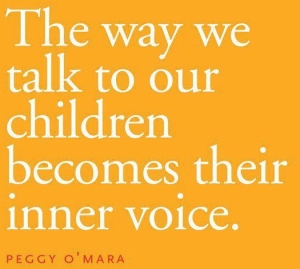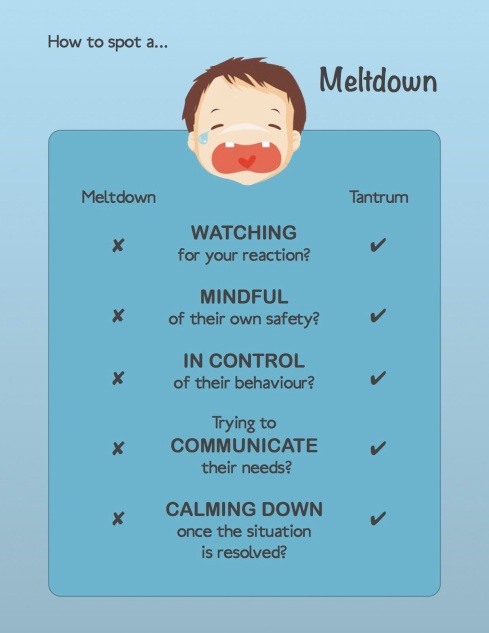I love this list of 12 important things every child — and maybe especially our children on the autistic spectrum — needs to hear.
Category Archives: Parenting
The Way Autism Looks
This is an incredible video. Today I stand up and applaud all the fierce-mom and fierce-dad advocates who never give up on their children. The struggle is real, but so is our strength.
Challenges & Blessings
Dr. Temple Grandin sits down with Nancy Asplaugh-Jackson from Autism Live to discuss children on the milder end of the autistic spectrum. Very informative and inspiring.
Autism Wandering
Have you seen the new Autism Wandering PSA yet? Watch and share to raise awareness!
The Quiet Voice of Courage
A Different Kind of Kvelling
I recently read an article in The Washington Post that really touched me; maybe it just hits close to home.
Nancy L. Wolf wrote about ‘kvelling’, a Yiddish word for ‘bursting with pride’, to describe what moms and dads everywhere do when bragging about their children’s accomplishments. But what happens to kvelling if your child is on his or her own very different path? Her article is worth your time and consideration. Read it in full here.
Collaborating with Educators
I typically do not post articles as long as the one that follows. However, I saw this article by Dr. DeAnna R. Burt in an autism newsletter I receive and thought it was relevant at the beginning of a new school year. I was encouraged by the information and hope you are, too!
Fostering Collaborative Partnerships with Your Child’s Educators
By Dr. DeAnna R. Burt
School is in session. For a child with autism, this often feels like embarking upon another unfamiliar and unpredictable experience; it’s unnerving and unsettling. This is how it feels for many children with autism who grapple with change.
Each school year presents a new learning opportunity for the child, his family, and his educators. At least that is how it was for my family; a new school year brought with it a new classroom environment, new sounds, a new teacher, a different set of expectations, new school policies, a new set of friends, a new class schedule, and a different lunch hour. Every year was full of change or, as I chose to see it, new opportunities.
Now the mother of a 20-year-old son with Asperger’s Syndrome (among other spectrum disorders), I knew very little about autism nearly 20 years ago when Mark was first diagnosed. But, what I failed to realize at the time was, that was also the case for the educators in his life.
Twenty years ago, we knew much less about autism than we do today. Oh, did I fail to mention that I too am an educator? Perhaps, this (among other reasons) contributed to my parenting journey being one marked by passionate advocacy for my son’s learning.
Still today, I maintain the opinion that everyone can learn within a supportive environment, but not every environment is conducive to learning. Some children require differentiated support in order to learn. We understand this better today in academics, but in those early years of my son’s life, my passion was often misunderstood; my presence resented by some of my fellow educators. But, that all changed. By the time Mark reached 4th grade, a collaborative and mutually respectful partnership had emerged between my family and his educators. So, what changed allowing us to foster such a supportive learning environment for Mark?
Honestly, I think we all changed. My son changed. I changed. And, his team of educators and administrators changed. We were on a continuum of learning, growing, and trusting one another. Perhaps, once we began to realize that we all wanted the same thing — a common outcome—a healthy, thriving, and successful learner—that is when Mark began to reap the benefits. We became partners toward his education.
So, in the category of “Helping Someone Else Along the Way,” I offer these tips toward fostering a collaborative partnership with your child’s educators this school year.
- Be willing to teach and be taught. Everyone stands to benefit from the knowledge and experiences of others. No one knows it all.
- Don’t stop believing. I raised Mark based on the belief that everyone can learn. My expectations of him and others were strategically aligned to this position.
- Be involved. Show up. Be visible for your child and others. Introduce yourself. Get involved so you can get to know the school and the school can get to know you. But, you must also know when to let others do their job and get out of the way.
- Use your external resources. There are times when the expertise of others (those outside the family and the school) is needed to offer a neutral perspective.
- Align yourselves as a team. Do not promote an “us” (family) against “them” (school) mentality. This only impedes progress and your child will be the one standing to lose the most in the end.
- Remember to say “Thank you.” (Can you imagine me saying this in your mother’s voice?) When the school gets something right on behalf of your child, praise them for it. Tell the superintendent of schools. Send the teacher a thank you note. Celebrate the success of your partnership.
- Finally, pay it forward. Be willing to share the learning with others. It did not take long before the school began to ask me to share my story, strategies, and resources with other families. Who wins? Everyone wins!
Have a safe and collaboratively positive school year.
Track Record of 100%
Finding the Right Shoes
Karen Wang has written a wonderful article called 17 Tips For Finding the Right Shoes For Your Child With Special Needs.
The wrong pair of shoes can create a day of misery for anyone. But when special needs are added to the mix, the right pair of shoes can become elusive. She offers sensory-friendly options and discusses making shoes more comfortable.
Check out her tips for finding the right shoes for your child by clicking the link.
Aspiration
“Autism Balm”
Dr. V. Ruth Pinney has been researching and working with autistic individuals’ brain chemoreception pathways with a view to changing the reactions to the specific sensory perceptions.
About one-third of people on the autism spectrum are hypersensitive to odors, and these reactions can lead to eating disorders and other behavior disorders. Hypersensitive autistic smellers and tasters tend to have poor appetites, gag easily when offered food and eat only a few foods that they can tolerate the smell of. Even normal or pleasant odors may be perceived by them to be malodorous and disturbing.
Dr. Pinney created NOXO Sensory Balm™ to help “tone down” the perception of smells by the brain by providing a scent that is calming to the brain’s emotional centers. When this balm is applied topically, under the nose, an individual can find relief from odors that trigger coping responses.
This balm was first marketed under the name “NOXO Autism Balm” because of the obvious application for those on the autism spectrum with sensory integration difficulties who need to eat a greater variety of nutritious foods. It is reported to be safe, easy to apply, and non-invasive.
I’ve not yet tried this product, so I welcome the feedback from parents who have. Please let us know about your experience. It truly takes a village…
[Click on the image for more company information]
Learning From Goldfish
Road to Recovery
For anyone who has not yet heard of Ethan Fox, he hit the news and Internet about three years ago with his mother, who explained how changing her son’s diet to gluten- and casein-free recovered him from his autistic spectrum disorder.
This is one of the news reports that interviewed Ethan, his mother, and his physician, who did a good job explaining the gut-brain connection and why diet has an impact on neurology.
I strongly disagree with the use and inference of the word ‘cure’ in the video. But ‘reversing’ and ‘recovering’ are wonderful reasons to explore all the options. I believe with all my heart that parents of children on the autistic spectrum remain on the frontlines, demanding, questing, ever-searching for answers with our outside-the-box thinking.
After watching the four-minute video, be sure to check out the Operation Clean-Up steps we’ve taken and continue to take with Corban, and see how much diet has affected his autistic symptoms.
10 Tips for IEP Meetings
 With the new school year upon us, many parents will be working with their children’s schools to implement IEPs. The Autism File Magazine’s Vaughn K. Lauer has compiled and published a list of top 10 tips to help get the most out of the IEP process (I especially appreciated tips #5 and #7). Although he’s written a book on how to conduct a truly collaborative IEP meeting, these tips were actually gathered from parents in a survey he conducted.
With the new school year upon us, many parents will be working with their children’s schools to implement IEPs. The Autism File Magazine’s Vaughn K. Lauer has compiled and published a list of top 10 tips to help get the most out of the IEP process (I especially appreciated tips #5 and #7). Although he’s written a book on how to conduct a truly collaborative IEP meeting, these tips were actually gathered from parents in a survey he conducted.
“All About Me”
 Michael Dorfman is a Michigan special education lawyer who represents students and their families to resolve conflicts within school districts. He’s come up with a wonderful back-to-school tool for our children that I love!
Michael Dorfman is a Michigan special education lawyer who represents students and their families to resolve conflicts within school districts. He’s come up with a wonderful back-to-school tool for our children that I love!
He reminds us that two children with autism–or ADHD, for that matter–are nothing alike, other than having the same diagnosis. That is why each child with a physical and/or learning disability attending school needs an “owner’s manual” to accompany them. This pamphlet communicates your child’s disability, needs, likes, past successes, and triggers for your child’s school teacher and paraprofessionals.
Click here to learn about how to write an “All About Me” Pamphlet for your child.
It’s going to be a great year!
Student Profile Form
The National Autism Association has published a Student Profile Form for the new school year. It’s a free download and they want to share it with everyone. Click on the picture of the form to download your copy.

Hope is Beautiful
It’s Not a Walk in the Park
Almost a year ago, I posted a video I found online of what sensory overload feels like for some children on the autistic spectrum. In this video, we are shown what it might be like to simply walk down the street for someone with ASD. Incredibly enlightening! I will be ever so much more aware when I’m walking outside with my 12-year-old son.
Roadmap for the Journey
 We live in an amazing time in which the definition of autism (neurological, environmental, and immunological) is changing. As parents of kids on the autistic spectrum, we are in a unique position of standing up as our children’s advocates and challenging diagnoses, prognoses, treatments, and therapies. We’re exploring alternative answers and options, some of which are controversial. What works well for one child or family may not work for others.
We live in an amazing time in which the definition of autism (neurological, environmental, and immunological) is changing. As parents of kids on the autistic spectrum, we are in a unique position of standing up as our children’s advocates and challenging diagnoses, prognoses, treatments, and therapies. We’re exploring alternative answers and options, some of which are controversial. What works well for one child or family may not work for others.
The current medical model in this country is not in a position to address the frightening growth in numbers of children on the autistic spectrum. As a mom who was gob-smacked by the reality that I’m my autistic child’s best hope, I continue to spend a great deal of time reading and researching information about autism and how to meet its many challenges. My rule of thumb is this: If it seems reasonable, safe, healthy and noninvasive, we’ll try it… not to cure autism, but to recover as much of Corban as possible.
I’m going to share with you what we’ve tried with Corban and the results we’ve seen. Will all of these ideas work for your child? Of course not. I’m not a medical professional who can argue for or against the scientific veracity of any of the things we’ve tried that have worked.
My greatest wish when we began this journey with Corban in 2011 was that we had had a roadmap to guide us. So it’s in that spirit that I share our journey, our paths, what’s worked for us and what hasn’t. Take from it what you can and leave the rest. If you’d like to join the conversation, feel free to leave a comment.
Each of our journeys is unique and personal. There is no one-size-fits-all answer. There are no magic wands. There is no sweep of eradication of autism. There is only our commitment to recover as much of our children as possible, a spectrum of possibilities to explore, and the belief that we as parents of autistic children can be strong beyond measure.
Watch for this icon in the series Operation Clean-Up.
Awareness Requires More Than Waiting
 April is, of course, Autism Awareness Month. And this month the yearly observance was preceded by the CDC’s announcement of the prevalence of autism, which is increasing at a dizzying speed: 1 in 68 children in the United States—and 1 in 42 boys—is on the autistic spectrum. This is up from 1 in 88 children a mere two years ago.
April is, of course, Autism Awareness Month. And this month the yearly observance was preceded by the CDC’s announcement of the prevalence of autism, which is increasing at a dizzying speed: 1 in 68 children in the United States—and 1 in 42 boys—is on the autistic spectrum. This is up from 1 in 88 children a mere two years ago.
The announcement was followed by a call for the government to research and find reasons/answers for these alarming and increasing numbers.
While waiting, it’s clear that parents of children on the autistic spectrum need to be more than aware; we need to remain proactive as our child’s primary advocates.
The choices we make for our children, the paths we choose to follow, the therapies we decide to implement to address the many challenges of autism are intensely personal. And yet, in many ways we’re all struggling with the same challenges. I’m hopeful a more open dialogue between parents will allow us to share what’s working, and what isn’t, in our own families.
With this in mind, I will be including in the pages of this blog some of the things we’ve tried with Corban that have made a significant difference for him. I share this information in the spirit of opening this dialogue as well as offering parents new to this journey a place to start.
I acknowledge right from the start that everything I mention in these pages will not work for everybody. There is no one-size-fits-all approach. There is no magic bullet or magic wand. I’m not a medical professional. And I recognize the spectrum defines a range. However, I’m constantly on the lookout for reasonable, practical, sensible, safe, and non-invasive things to try with Corban to address the challenges of autism. I will freely share these with readers of this blog in the hope that you, too, might find them helpful.
Regardless of the future numbers from the CDC or the government response to them, as parents we can’t afford to wait.
Move Mountains in 2014
I’ve been using this list during the home-school day when I’m teaching Corban. It reminds me that his learning style and methods are not the same as mine. It also helps me remember to show him patience and respect when challenges come up. Looking at this list this morning, I realized what a great list it is for supporting anyone on the spectrum.
Be Awesome!
This fabulous list is good for all of us to review, but I’m inspired today to set a strong and positive example for my autistic son to follow. In true Aspie style, he’ll tell you he thinks ‘awesome’ is spelled wrong; he’d like to see it changed to “AU-SOME’! I don’t disagree. Let’s all be ‘au-some‘ today!
Top 3 Foods That Impact Learning & Behavior
 Research has linked the brain to gut health and other imbalances like moodiness, sleeplessness, difficulty learning, and even ADHD. And the foods your child eats play a major role in cognitive function.
Research has linked the brain to gut health and other imbalances like moodiness, sleeplessness, difficulty learning, and even ADHD. And the foods your child eats play a major role in cognitive function.
Here are 3 problem foods to avoid that could impact learning and behavior in your child:
1. Food Additives: Research has confirmed that children are sensitive to preservatives and artificial food coloring. Additives may even trigger disorders like ADHD, conduct disorders, anxiety, dyslexia, and autism.
2. Gluten: According to the National Foundation for Celiac Awareness, up to 18 million adults and children in the US may have non-celiac gluten sensitivity, which can trigger a number of issues, including angry outbursts, mood swings, anxiety, and tics/stimming.
3. Sugar: Optimal brain function requires balanced blood sugar. Unfortunately, sugar can be found in countless convenience/fast foods and has been associated with a higher risk of ADHD, diabetes, obesity, autoimmune disorders, mood swings, and aggression.
Although this blog is dedicated to supporting my 12-year-old autistic son — and we pulled food preservatives, artificial flavors and colors, artificial sweeteners, gluten, casein, soy, and refined sugar five months ago — this isn’t just advice for those on the autistic spectrum. All of us can benefit by looking at our diets in today’s world.
Read more here.
Sensory Overload
Sensory overload is something parents of autistic children know well. We frequently see our children react to an environment that has too much stimulation for our child’s nervous system to successfully process.
This article has a good definition for, as well as a list of symptoms of, sensory overload that is very helpful for parents.
You can see the list here.
Let’s Talk About Bullying
 As parents, teachers, and advocates, we have a vital role to play in preventing bullying and protecting our children.
As parents, teachers, and advocates, we have a vital role to play in preventing bullying and protecting our children.
I just read a great article that discussed some very practical things we can do to help our kids understand what bullying is, to keep the lines of communication open, and to model kind and respectful behavior for our children.
But it’s the fourth item on the list that blew me away. The article reminded us that we need to encourage our kids to do what they love. Taking part in activities, interests, and hobbies they like builds confidence and pairs them up with friends who have the same interests. And that helps to protect kids from bullying. Brilliant!
You can read the full article here.
Believe in the Possibilities
New News?
 Earlier this year, the Centers for Disease Control published an article about national health statistic reports and changes in the prevalence of Autistic Spectrum Disorders in the United States.
Earlier this year, the Centers for Disease Control published an article about national health statistic reports and changes in the prevalence of Autistic Spectrum Disorders in the United States.
Since 2007, there has been a significant rise in the number of parent-reported ASD diagnoses in school-aged children, especially boys.
Apparently, parents are — and will remain — on the front line as their children’s advocates. I certainly don’t need a study to tell me that!
Read the article in its entirety here.
The Toll of Stress
 I read an article recently about a research study published in the Journal of Autism and Developmental Disorders. In 2009 researchers followed a group of moms with autistic children for eight days in a row. The moms were interviewed at the end of each day about their experiences, and their hormone levels were measured to assess their stress.
I read an article recently about a research study published in the Journal of Autism and Developmental Disorders. In 2009 researchers followed a group of moms with autistic children for eight days in a row. The moms were interviewed at the end of each day about their experiences, and their hormone levels were measured to assess their stress.
The gist of the study was that on a day-to-day basis, autism mothers experience more stressful events and have less time for themselves compared to the average American mother. They struggle with frequent fatigue and work interruptions, and spend significantly more time caregiving than moms of those without disabilities. In fact, autism moms have chronic stress similar to combat soldiers.
Mothers (and fathers) of children with disabilities don’t need a research study to tell them this; we live it day in and day out. However, it is vital we pay attention to the physiological residue of stress, which can result in chronic health problems as well as compromised immune functioning and mental activity. We need to stay strong to be our children’s frontline advocates!
A New School Year…
 As a new school year begins for us here in West Michigan, I’ve been thinking about my blessings. Coincidentally, I received an email from Tali Berman, an autism specialist, that shared these wonderful and touching blessings for Corban and me.
As a new school year begins for us here in West Michigan, I’ve been thinking about my blessings. Coincidentally, I received an email from Tali Berman, an autism specialist, that shared these wonderful and touching blessings for Corban and me.
Blessing for your special child, Corban:
“May your child be loved for who he is, celebrated for his strengths and unique abilities, and grow in a way that allows him to further bring his unique self to the world.”
Blessing for you, Peggy :
“May you celebrate your own efforts, and may your sense of peace and joy be derived not only from the achievements your child makes (though that is wonderful too!) , but from the life experience you share together.”
Thank you, Tali. What a lovely thought to begin a great year.
You can find out more about what Tali is doing at her website.
Rolling Pins!
 I ran across this wonderful article by Brian R. King about rolling pins and five other simple sensory solutions for children on the autism spectrum. We tried this last night and it was an instant success with 11-year-old Corban. I share the article in its entirety here.
I ran across this wonderful article by Brian R. King about rolling pins and five other simple sensory solutions for children on the autism spectrum. We tried this last night and it was an instant success with 11-year-old Corban. I share the article in its entirety here.
6 Simple Sensory Solutions for the Autism Spectrum
By Brian R. King, 2/15/11
After a very exhausting day yesterday, my dear wife tried rubbing my shoulders to give my nervous system the deep pressure that always makes me feel better. Unfortunately, her hands were sore and she just couldn’t muster the strength.
Being the gifted outside-the-box thinker she is, she said, “Wait right here.” A few moments later I felt a rolling pin going up and down my back. She was using it as she would to roll out dough, and I have to tell you the feeling was heavenly. It was like she was rolling the tension out of my muscles, and I almost fell asleep sitting there, it was so calming.
Since that was a success she moved to my calf muscles. It was so calming, so fast that I could hardly speak. I hope she didn’t realize she’d accidentally discovered a way to shut me up.
We tried it on our sons (at their request) and they loved it. This was too good to keep to myself, so I shared it with my friends on Facebook, and they loved it. Some reported trying it with their own children who experienced similar results. Others jumped into the discussion and offered additional at-home sensory solutions that are simple, practical and worth adding to your collection of solutions.
1) Rolling Pin
For all of the glorious reasons I mentioned above.
2) Hanging Bar
If you’re not set up for this in your home, you can find one at any local park (monkey bar) or at the gym. I have found that hanging from a bar is a way to quickly organize my nervous system. It stretches my upper body muscles in a uniform way and opens up my vertebrae with a calming stretch that relaxes my whole body and helps me feel focused in only a few seconds.
3) Indoor Trampoline
Usually about 3 feet in diameter, they are small, portable and easy to store. They are highly effective at helping a child who has been held up in school all day to get fast, intense proprioceptive input to blow off a lot of steam, anxiety and feel calmer and focused.
4) Bean Bag Chair
For a spectrumite with poor upper body tone (including me), holding their body up in a standing or sitting position can be exhausting. The student who keeps lying on their desk in class for example. A bean bag chair is a simple way for someone to sit in a relaxed position and still remain alert. I have a similar foam chair I used to use for long periods of writing. What the heck am I thinking, I need to start using that again.
5) Backpack with Handheld Weights
This is an inconspicuous way for a spectrumite to get deep pressure on their shoulder muscles to achieve the calm they need. They can take charge of this themselves and vary the amount of weight in the backpack to accommodate their needs at the time. Far more versatile than a weighted vest.
6) The Wall
It’s more than a Pink Floyd song. It’s also a sturdy, flat surface you can lean against and push with your hands, or lean against it with your back and push with your legs. The intense muscle contraction you use to push can create a good amount of proprioceptive input than can decompress anxiety and be very calming.
The Whole Night Sky
Gentle Gecko
 A few months ago, Corban’s super-supportive grandmother bought him a weighted sensory “toy” online from Future Horizons, a wonderful website of sensory resources for autistic children. Operating on the same principles of weighted blankets and vests, these colorful geckos help children with sensory issues by providing the extra weight to feel grounded, as well as to soothe, calm, and comfort themselves. Each gecko is about 30 inches long, weighs about seven pounds, and is handsewn. It’s filled with non-toxic milo (birdseed) and is irresistible! But does it work?
A few months ago, Corban’s super-supportive grandmother bought him a weighted sensory “toy” online from Future Horizons, a wonderful website of sensory resources for autistic children. Operating on the same principles of weighted blankets and vests, these colorful geckos help children with sensory issues by providing the extra weight to feel grounded, as well as to soothe, calm, and comfort themselves. Each gecko is about 30 inches long, weighs about seven pounds, and is handsewn. It’s filled with non-toxic milo (birdseed) and is irresistible! But does it work?
Visits to the dentist for Corban are very stressful times. When he had to go in a few weeks ago to get his teeth cleaned, he took his gecko along and laid it across his lap during the procedure. Not only was I amazed at how calm he was, the dentist and his staff were so impressed, they decided to get one for their office for other children to use during dental visits. How’s that for a testimonial?!
As is true with most good-quality weighted products, the gecko is not cheap. Each one runs about $35, but this therapeutic “toy” is worth every penny of the investment, in my opinion.
A Bucket of Self-Esteem
Disconnected Kids
 I just finished a fascinating and hopeful book called Disconnected Kids, by Dr. Robert Melillo. He shares in this easy-to-read book that conditions presenting as neurologically based — autism, Asperger’s syndrome, PDD-NOS, ADHD, dyslexia, OCD, and ODD — show striking similarities in brain diagnostic imaging. He asserts that all of these conditions, which adversely affect behavior and learning are actually related to one problem: an imbalance of electrical activity between areas of the brain, especially the right and left hemispheres. Dr. Melillo calls this imbalance FUNCTIONAL DISCONNECTION SYNDROME (FDS).
I just finished a fascinating and hopeful book called Disconnected Kids, by Dr. Robert Melillo. He shares in this easy-to-read book that conditions presenting as neurologically based — autism, Asperger’s syndrome, PDD-NOS, ADHD, dyslexia, OCD, and ODD — show striking similarities in brain diagnostic imaging. He asserts that all of these conditions, which adversely affect behavior and learning are actually related to one problem: an imbalance of electrical activity between areas of the brain, especially the right and left hemispheres. Dr. Melillo calls this imbalance FUNCTIONAL DISCONNECTION SYNDROME (FDS).
Because FDS isn’t typically due to an injury to the brain, the disconnection can be fixed by brain-balancing, which is a non-invasive, drug-free, at-home exercise therapy that is based on the neuroplasticity of the brain.
This book helps parents determine if their child is right-brain or left-brain dominant, and then suggests at-home exercises to strengthen the deficient area(s) to balance the electrical activity. High-functioning autistic children, like my son Corban, are typically right-brain deficient with enhanced left-brain skill. My goal over the next 90 days is to work with the suggested exercises in the book to strengthen his brain’s right-hemisphere. I’ll keep you posted!
Sensory Challenges
Calming an Asperger’s Child
The Little Things
Dietary Intervention
 I’ve just finished reading The Autism & ADHD Diet by Barrie Silberberg about dietary interventions for our children on the autistic spectrum. It’s a thought-provoking exploration of how modern society has come to accept dietary habits that are far from natural or healthy, as well as the price we pay in making medications our first response.
I’ve just finished reading The Autism & ADHD Diet by Barrie Silberberg about dietary interventions for our children on the autistic spectrum. It’s a thought-provoking exploration of how modern society has come to accept dietary habits that are far from natural or healthy, as well as the price we pay in making medications our first response.
I was impressed with her balanced information about how families can embrace the sanity of sensible nutrition to improve the health of their child’s gut-brain connection.
This is a must-read for parents who are considering implementing a gluten-free, casein-free diet.
Why Won’t You Go To Sleep?
 It is estimated that between 60% and 80% of Autistic children have difficulty sleeping. This can include trouble falling asleep, restlessness and poor sleep quality, thrashing about, and early rising.
It is estimated that between 60% and 80% of Autistic children have difficulty sleeping. This can include trouble falling asleep, restlessness and poor sleep quality, thrashing about, and early rising.
To address the toll this takes on children and their parents, Autism Specialist Debi Taylor has written an e-book called 30 Ways To Get Your Child With Autism to Go to Sleep with easy and practical tips that can be done in your own home, including:
✔ Calming sensory routines
✔ Suggestions for safe supplements to give your child
✔ Foods that may be making your child hyper and keeping him awake
✔ An ancient Chinese massage technique that greatly improves mood,
behavior, and sleep patterns
✔ How the color of your child’s room may set off unwanted stimulation
✔ Links to helpful resources, and more
Debi is the founder of Spirit of Autism and is the parent of an autistic child. You can check out the book here.
The Power of Words
Asperger’s Bullying & School
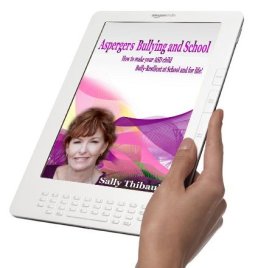 Over 85% of children on the Autism Spectrum will be bullied at some stage in their school lives. And the uncomfortable truth is that bullying is getting worse. Sally Thibault has a wonderful e-book that addresses this sad fact and shows parents how they can make their child, on the Autism Spectrum or living with Asperger’s, bully resilient for school… and for life.
Over 85% of children on the Autism Spectrum will be bullied at some stage in their school lives. And the uncomfortable truth is that bullying is getting worse. Sally Thibault has a wonderful e-book that addresses this sad fact and shows parents how they can make their child, on the Autism Spectrum or living with Asperger’s, bully resilient for school… and for life.
Great Books on Autism
 For any child with challenges, parents need a plan they can implement right away. In Healing and Preventing Autism, Jenny McCarthy teams up with top autism specialist Jerry Kartzinel, M.D., to offer a prescriptive guide to the healing therapies and treatments that have turned the lives of so many children around. While autism cases have grown over 6,000% since the 1970s, the medical community is still waking up to the epidemic, and parents need tools to begin healing their children and educating their doctors.
For any child with challenges, parents need a plan they can implement right away. In Healing and Preventing Autism, Jenny McCarthy teams up with top autism specialist Jerry Kartzinel, M.D., to offer a prescriptive guide to the healing therapies and treatments that have turned the lives of so many children around. While autism cases have grown over 6,000% since the 1970s, the medical community is still waking up to the epidemic, and parents need tools to begin healing their children and educating their doctors.
Unraveling the Mystery of Autism and Pervasive Developmental Disorder is not only the riveting story of one family’s quest to treat their son’s illness, it’s an inspiring account of their search for answers and effective treatments. What Karyn discovers is that conventional thinking about autism’s nature, causes, and treatment is dreadfully wrong. And Dr. Bernard Rimland, Ph.D., Director of the Autism Research Institute, agrees. This book shifted the world for me.
A Voice for Every Student
 Since 1975, the Student Advocacy Center of Michigan has worked to ensure our most vulnerable students stay in school, find success, and realize their right to a quality public education.
Since 1975, the Student Advocacy Center of Michigan has worked to ensure our most vulnerable students stay in school, find success, and realize their right to a quality public education.
Their services include free non-legal education advocacy, fee-based advocacy, technical assistance, and dropout prevention.
Although their focus is broader than children on the autistic spectrum, they offer sound strategies for working and partnering with schools to prevent negative situations from becoming problems and resolving those issues that develop.
But perhaps their greatest resource is the sample letters they provide to make it easier for parents to write to schools and administrations about our children’s education issues — from requesting an IEP/IEE to writing a Memo of Understanding to requesting to view records to lodging a complaint.
Click here to see a complete list. Student Advocacy Center Sample Letters.
Beautiful Gifts
Preventing Meltdowns
Meltdown behavior is quite common for those with Autism Spectrum Disorders. And, indeed, the most frequently asked question by parents and educators is: “What do I do when my child has a meltdown?”
Judy Endow, MSW, has written a very good article on the stages of meltdown behavior and strategies to prevent them before they start. This is a powerful tool to help parents and educators cope with explosive behavior in our autistic children.
And check out the chart below for a quick reference of the differences between a tantrum and a meltdown.
The Mom Song
This wonderful video condenses all the things a mom says to her kids — atypical and neurotypical — during the course of a day into three minutes, and all to the tune of the William Tell Overture.













